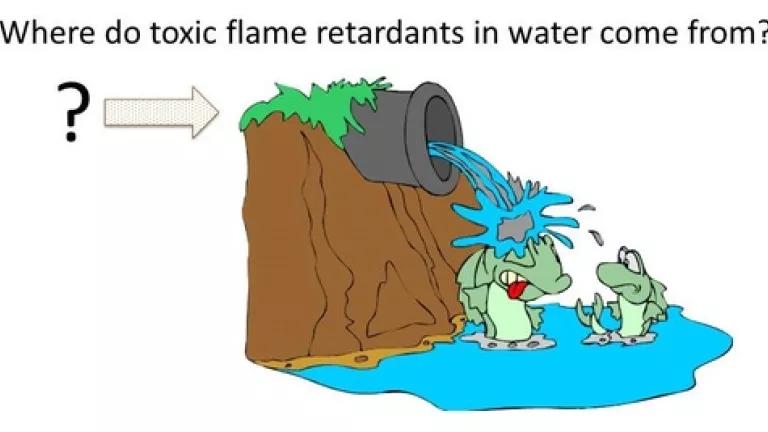
You might be washing more than the green guacamole stains from yesterday’s messy burrito out of your favorite shirt when you do the laundry. Surprising findings from a new paper show that toxic chemicals used in our everyday products move outside by hitching a ride in dirty laundry water, and end up contaminating ecosystems such as rivers and streams.
The study from the Washington Toxics Coalition was published in the peer-reviewed journal Environmental Science & Technology and focused on toxic flame retardant chemicals that are used in many of our products like sofas, couches, recliners, electronics and home building insulation.
We’ve known for a long time that the flame retardant chemicals used in these products are found in waters globally: oceans, lakes, streams, rivers and even drinking water. Flame retardants do travel to rivers and streams via polluted runoff, but this doesn’t account for everything. Where are the rest of the flame retardants in water coming from?

Flame retardants are added to furniture filling but aren’t chemically attached to the material. The flame retardants continuously move out of the furniture into indoor air and dust. The chemicals enter people’s bodies when they breathe contaminated air and get contaminated dust on their hands and in their mouths.
The researchers discovered that this contaminated dust plays a key role in how flame retardants get into water, too. They tracked flame retardants through four steps as the chemicals moved from living room to lake (orange boxes in picture below).
Based on the findings of the study, it seems that contaminated dust sticks to our clothes whenever we walk into our house, sit on the couch, or otherwise come into contact with the dust. Flame retardants in indoor air also appear to be sticking to our clothes. When we put our clothes in the laundry, the flame retardants wash off into the water. The flame retardant contaminated water flows from houses to wastewater treatment plants, where the treatment processes don’t remove or break down some of the chemicals very well. Finally, the flame retardant contaminated water is released from treatment plants into water bodies like rivers.

This may seem insignificant, since such a miniscule amount of flame retardants can stick to any one person’s clothes. But, the study found that for certain flame retardants, laundry water was likely the main culprit contaminating water into and out of wastewater treatment plants. When you put it all together, it adds up to some serious toxic tonnage—the authors estimated that for one flame retardant, about 400 tons of the chemical might be released into waters nationally due to this process in one year.
For policy makers, this is yet another impact of these chemicals that needs to be considered—flame retardants used in our indoor products don’t just end up in people, but in our rivers, lakes and streams where they can affect water quality and be toxic to aquatic plants and animals. Many flame retardants are also persistent in the environment—they’re not broken down by natural processes, and can contaminate drinking water, plants and animals in our food chain.
But what does this mean for me and you? Well, this is yet one more reason to avoid flame-retarded products wherever we can. Flame retardant chemicals have been added to the filling inside U.S. upholstered furniture, but experts agree that these chemicals are not needed in order to make furniture fire safe. There are safer, healthier options for flame retardant-free furniture available at stores now—better for you, me and the fish in the sea!


